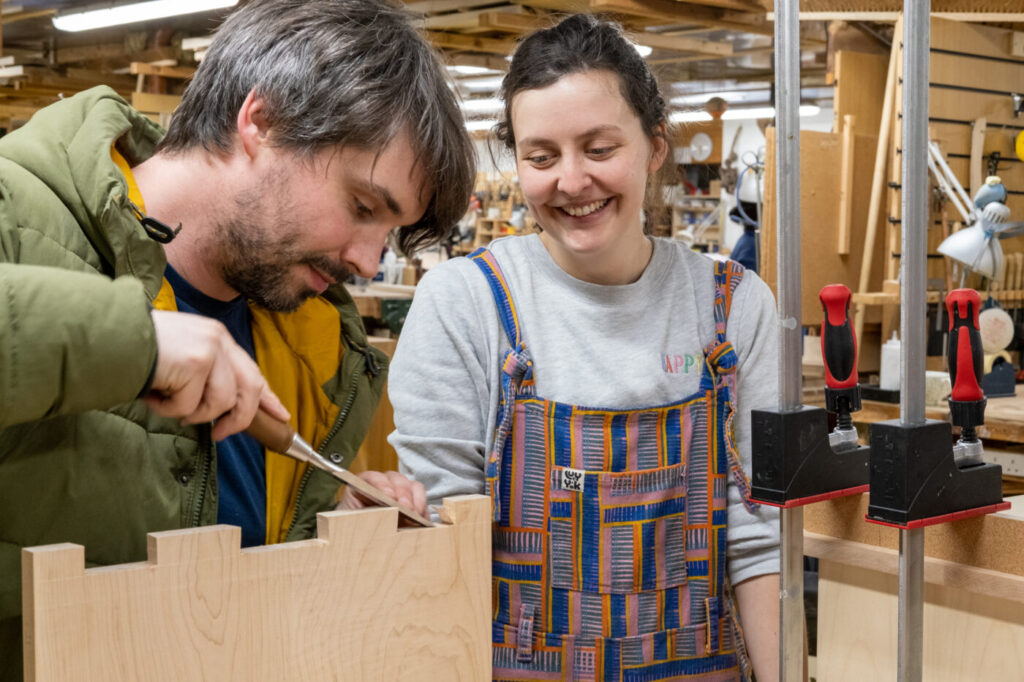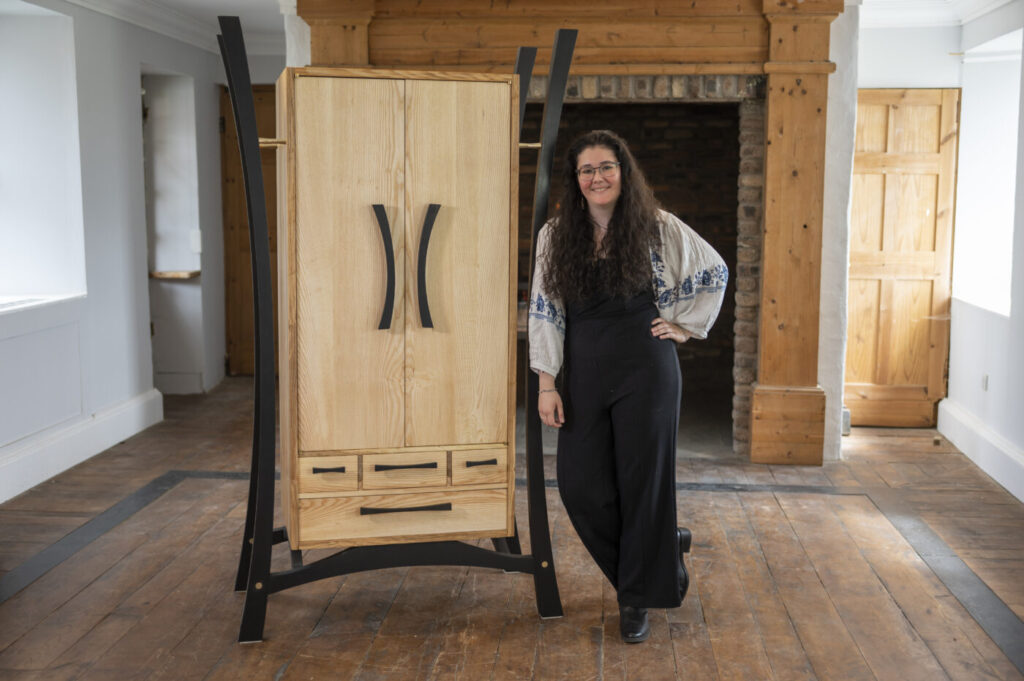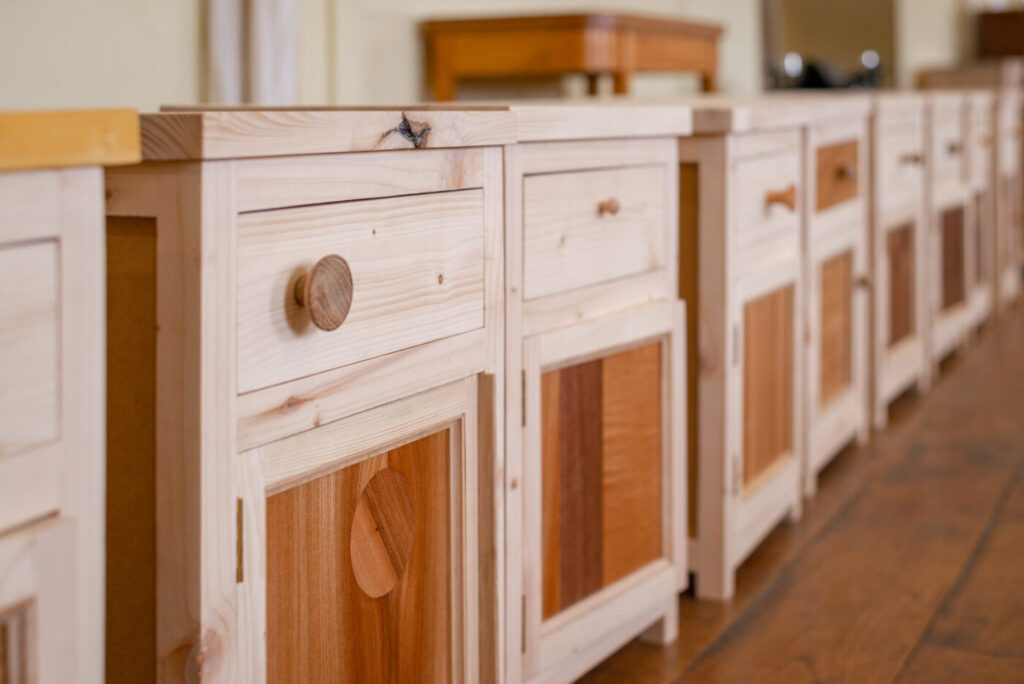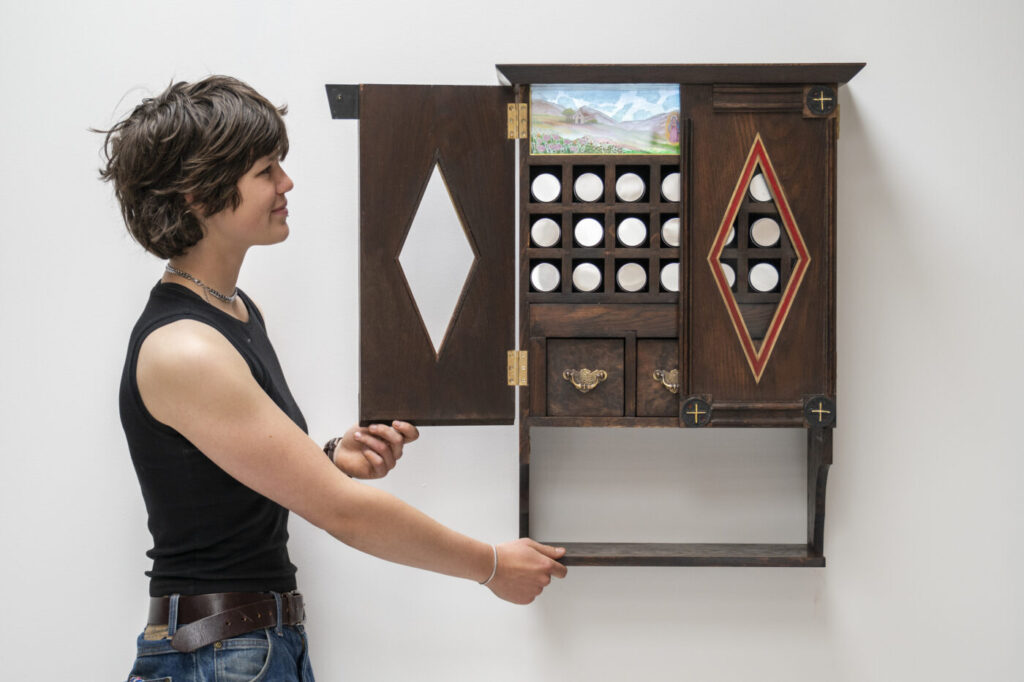Cabinet making offers a solid foundation in essential woodworking skills, while allowing makers to branch into more complex, creative, and specialised areas.
With over 150 monthly Google searches for cabinet making courses in the UK, the demand for learning this discipline is clear.
But what exactly does a cabinet making course teach you? In this guide, we’ll explore the skills typically covered, the kinds of projects you might take on, where this training can lead, and why studying cabinet making as part of a broader woodworking education may ultimately offer the strongest path forward.

What are the skills you need for cabinet making
Cabinet making typically focuses on precision joinery and functionality, but don’t let the name fool you. It doesn’t begin and end with kitchen cabinets or side tables found in your living room. Cabinet making spans a wide range of furniture-making, from ornate antique wardrobes and mid-century sideboards to bespoke built-ins and commercial shopfitting.
It’s this diversity that makes cabinet making such a valuable starting point. Here are just some of the skills you may explore in a typical cabinet making course:
- Traditional joinery technique: Learn how to create strong, lasting joints like dovetails, finger joints and mortise-and-tenon – the foundations of well-built furniture that’s made to last.
- Confident use of hand tools and machinery: Chisels, planes, marking gauges, routers, bandsaws and spindle moulders – you’ll be trained to use tools safely and efficiently.
- Layout, measuring and accuracy: Precision is everything. A millimetre out can throw off an entire piece, especially when creating fitted furniture or custom joinery.
- Understanding of timber and materials: Different woods behave in different ways. You’ll gain knowledge of timber movement, strength, finish quality, and which materials are best suited for each design.
- Reading and interpreting technical drawings: Cabinet makers often work from sketches, architectural plans or CAD drawings. You’ll learn how to translate 2D visuals into accurate, 3D furniture pieces.
- Assembly and installation: From aligning doors and installing hinges to making sure built-in furniture fits perfectly on-site, this stage brings all your skills together with a professional finish.

Do I need to take a cabinet making course?
If you’re serious about woodworking, you might consider starting with a short, focused cabinet making course. It can be a great introduction to woodworking, but for those who want to build a career or launch a business in furniture design, it may only scratch the surface.
Cabinet making draws on a broad mix of techniques: joinery, design, tool handling, finishing, installation, and even client communication. It’s not a skill that develops overnight, and it’s best learned in a setting where you can take your time to master it.
This is why many students benefit from a longer, more comprehensive woodworking course, one that lets you build strong foundations, explore different specialisms, and discover what truly excites you. Who knows? You might come in for the cabinetry and fall in love with veneering or chair making along the way.
In short, yes, a cabinet making course can be incredibly valuable, but ideally one that sits within a wider, well-rounded woodworking education.
Cabinet making at Chippendale School
At Chippendale School, cabinet making is not taught as a standalone module but rather embedded throughout our 30-week Professional Course, forming a key part of a much broader woodworking education.
On the Professional course, all students are taught the traditional method of making cabinets in the first term. One of the set projects is an Arts & Crafts inspired bedside cabinet, which is constructed using the frame and panel method. It has a dovetailed drawer and hinged cabinet door with tapered legs and a chamfer profile on the underside of the top. This serves as a key reference point for students to look back on when designing their own furniture later in the course. It also establishes the industry recognised order in which each process needs to happen.
From the very beginning, students develop the essential cabinet making skills such as traditional joinery, precision measuring, layout, finishing, and the confident use of both hand tools and industry-standard machinery.
At every stage, students are encouraged to work with different materials, experiment with design, and begin thinking like a professional maker, from learning how to analyse briefs to understanding how to best market their products.

What can I do with a cabinet making course?
For many students, cabinet making becomes a core part of their future practice, whether that’s bespoke kitchens, high-end fitted interiors, or one-off statement pieces.
Some go on to launch their own workshops or small businesses, designing and building custom furniture for private clients. Others have taken their cabinet making skills into commercial interiors, retail installations like Edinburgh’s Splintr and public-facing commissions.
Many also use their cabinet making training as a launchpad into other disciplines, combining it with carving, veneering, design consultancy or restoration work.
In short, mastering cabinetry is a brilliant way to begin your woodworking journey. But it’s just that – the beginning.
—
For hands-on experience and real cabinet making skills, take a closer look at our Professional Woodworking Course.
